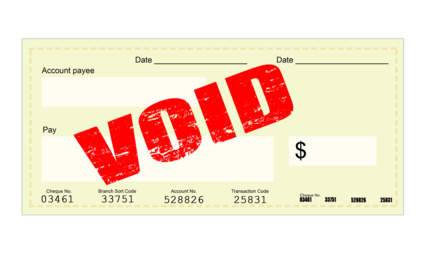What are the Secure Electronic Delivery Methods Of W2 and 1099 Forms?
If you’re a business owner who pays employees an annual remuneration of USD$600 and above for their work, you must file a Form W-2 for each employee. Remember that a W-2 form is different from pay stubs. The W-2 form is like a net earnings pay stub for your employee.
Similarly, if you’re a client to an independent contractor and you pay them at least USD$600 for their services, you must send the self-employed entrepreneur the 1099 form.
You have the option to send these forms either in person, through the mail, or electronically. With the advancements in technology, you wouldn’t want to bear with the slow pace of mails. Instead, you’d rather send the tax forms electronically and deliver them instantaneously to your workers. This article delves deeper into how to deliver W-2 and 1099 forms securely through electronic transfers.
Deadline for sending W-2 forms
As you may already know, you have to send the W-2 forms to two addresses every year. First, you should send it to the employee to enable them to file their tax returns. Second, you must send a copy of the form to the Social Security Administration (SSA) so that they verify the information.
For the employees, your deadline for sending the files is January 31, after the tax year. For instance, if the form has tax details for 2021, you must send it by January 31, 2022. And the same applies to filing the form with the SSA. If this date falls on a Saturday or Sunday, the deadline is usually pushed to the next business day.
Having said this, it’s critical to choose a delivery method that won’t result in undue delays and make you miss the deadlines—the best way to send the forms electronically.

Guidelines for electronic transmission
The IRS lists four critical rules that you must follow when transmitting tax forms online:
Recipient’s consent: The recipient—in this case, your employees—must provide a written consent to receive their tax forms electronically rather than through the mail. And at the time of receiving the forms, they mustn’t have withdrawn their consent. Additionally, they must send you an electronic response to confirm that they can access the files you send via the internet.
Key notices: Before your employees’ consent to the electronic mode of transmission, you must ensure they know the following:
-
That you agree to provide a paper copy of the tax forms, in case they’re not comfortable with the electronically transmitted copy.
-
The breadth and period of consent.
-
How to pull back from the agreement if workers decide otherwise within the duration of the consent.
-
How to get an additional paper copy of the tax forms.
-
The circumstances that may force you to stop sending tax forms over the internet.
-
A full list of hardware and software that they may need to access and download or print the shared forms.
-
The date beyond which they won’t be able to access their tax forms.
Timelines: You must inform your workers when you post their tax forms so that they get to file them on time. After the tax payment, you should still ensure that the electronic statements stay up on the website until October 15 of the next year.
Changes to the delivery method: If you plan to switch to a different delivery method, you must inform your employees of your intentions, and they must consent to your proposed new delivery means before you start using it.

Delivering through the SSA portal
If you decide to use the SSA portal, you must first register to use the “Business Services Online” feature. The system requirements, according to the SSA, are as follows:
-
Internet access.
-
A web browser that has 128-bit encryption. Coupled with the use of Secure Sockets Layer (SSL) communications protocol, this ensures that data is conveyed safely online without any form of eavesdropping by hackers.
-
A web browser with cookies enabled. It’s a requirement that you accept cookies if you want to work with the Business Services Online.
-
Version 5.0 or higher of Adobe Acrobat Reader.
With all the above conditions met, you can securely transmit the forms online. Note that the Business Services Online isn’t always available 24/7. You’d want to use the following time blocks for W-2 transmission:
-
Monday to Friday: 5.00 a.m. to 1.00 a.m. eastern time
-
Saturday: 5.00 a.m. to 11.00 p.m. eastern time
-
Sunday: 8.00 a.m. to 11.30 p.m. eastern time
While the portal may be up during times outside the one specified above, it’s not always a guarantee. Also, note that the password you set when creating your account expires after 90 days. Luckily, the system automatically notifies you to reset your password when you try logging in after the expiration.
If you experience any delays in processing submissions, know that it’s because of high traffic. And if the delays are unbearable, you’d want to try it some other time.

Delivering through the FIRE system
Aside from the SSA provision, the IRS runs the Filing Information Returns Electronically (FIRE) system for delivery of form 1099-MISC and other information returns. By definition, information returns are documents that aren’t tax returns but which the IRS requires documentation.
You must first create an account to have access to the information returns app. In this process, you must also apply for a Transmitter Control Code (TCC), which you must have to access the FIRE system. The TCC is a five-digit code unique to the business delivering the information return documents. With this in your possession, you can follow the specific guidelines for filing your form.
Use a SaaS company
The above two delivery methods are government-run. Your third option of delivering W-2 and 1099 forms is through software-as-a-service (SaaS) companies. There are dozens of them that offer such services. Some facilitate the sending of the tax forms to the recipients’ emails. However, this method comes with security concerns, given that emails are usually stored in clear text, meaning that they’re readable by third parties.
Emails don’t feature end-to-end encryption. As such, these companies need to use strong passwords for the documents they send through email to ensure only the authorized recipient reads the document. The password can, say, be set as the 5 digits after the first three digits of the Social Security number.
To overcome the downsides of direct emails, other SaaS companies have self-service web portals for the transmission of tax forms. Generally, the employees have to register to this portal. They get an invitation email with details on how to get started. As an employer, all you have to do is a few clicks of the software to have the W-2 and 1099 forms uploaded to the portal. Your employees will then access the same forms on their end and file returns.
The design and other intricate details of the portals vary from vendor to vendor. Thus, you’d want to choose one with a straightforward user interface. Also, some come with a monthly subscription fee, so you’d better go for the one that’s budget-friendly.

Advantages and disadvantages of electronic delivery
Electronic delivery of tax forms is advantageous in more ways than one. Here are a few of the benefits:
-
Saves time: If you were to send hundreds or thousands of tax forms by post, you know how time-consuming to print all those, stash them into envelopes, and send them to the employees, IRS, and SSA. But thanks to electronic file transmission, you can send thousands of files at a fraction of the time you’d have used for mailing.
-
Security: A paper copy makes it quite easy to illegally read the contents. On the contrary, sophisticated encryption technologies make electronic transmissions very secure against prying eyes.
-
Simplicity: Electronic filing is generally simpler than filing paper returns. You eliminate the need to print forms and purchase envelopes and postage. Electronic filing lets you complete every process on the computer.
-
Record keeping: Electronic delivery of tax forms enables automatic archiving of your financial statements for as long as you want. That’s unlike paper copies, which are prone to wear and tear, theft, and getting lost.
-
Accuracy: With sophisticated formulae involved in electronic filing, your likelihood of making mistakes is significantly reduced. You understand that the IRS can fine or jail you if you give incorrect or incomplete information. Electronic filing avoids this altogether.
But any good thing comes with one or two downsides. Electronic delivery is disadvantageous in the following ways:
-
Technological issues: Not all your employees are computer-savvy. While it may be a breeze for you, electronic filing might be quite difficult for those who haven’t been using computers. But that can’t be said of paper filing since most have basic reading and writing skills.
-
Complex returns: If you have tax returns that are beyond the scope of electronic filing, you may have to resort to paper forms.

Conclusion
There are several options to secure delivery of W-2 and 1099 forms. Once you get to know how the online transmissions work, you’ll surely enjoy the provisions, given the several advantages of this method as opposed to the use of paper copies. And since it simplifies the filing of taxes, you no longer have an excuse in lagging behind to file yours.















